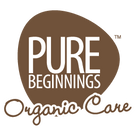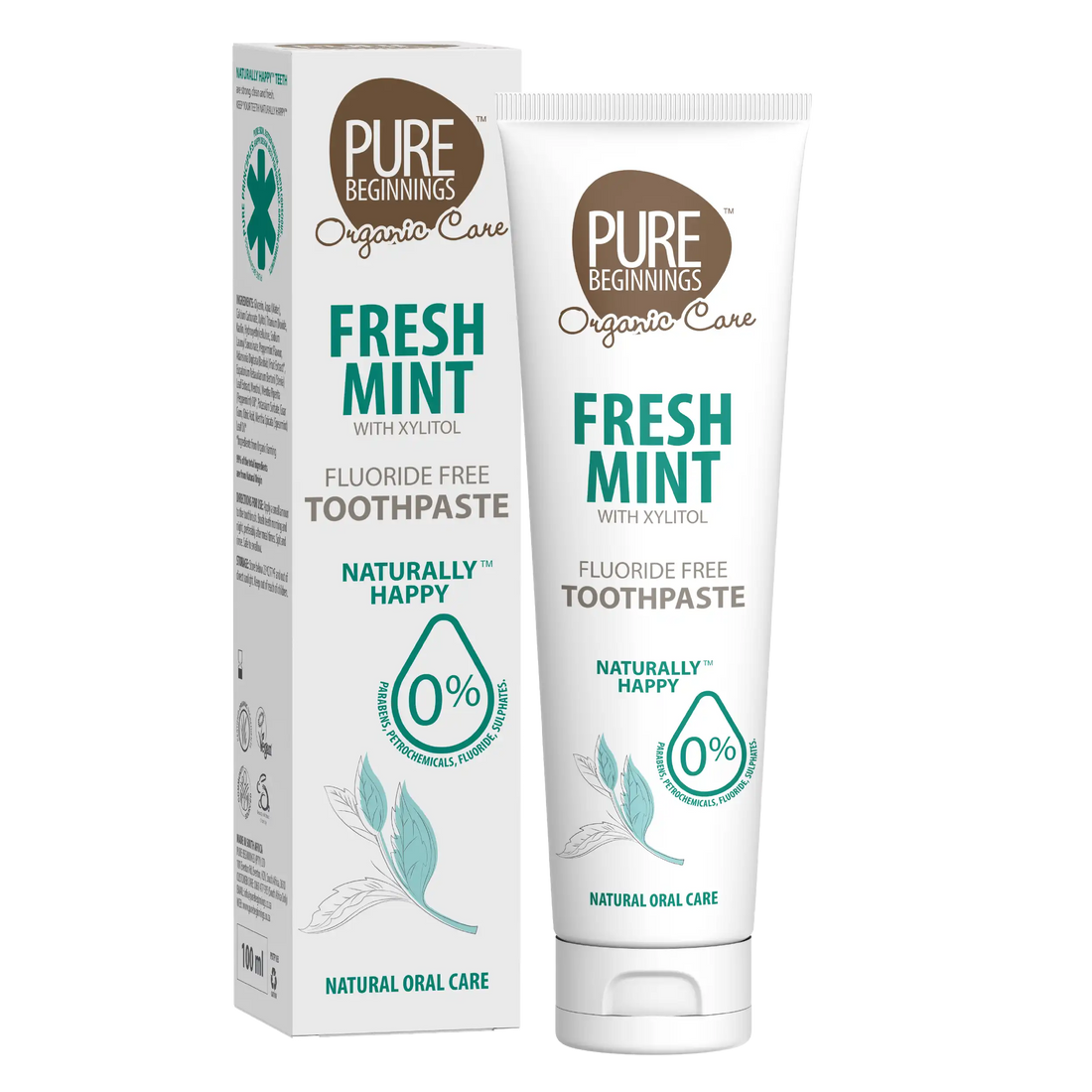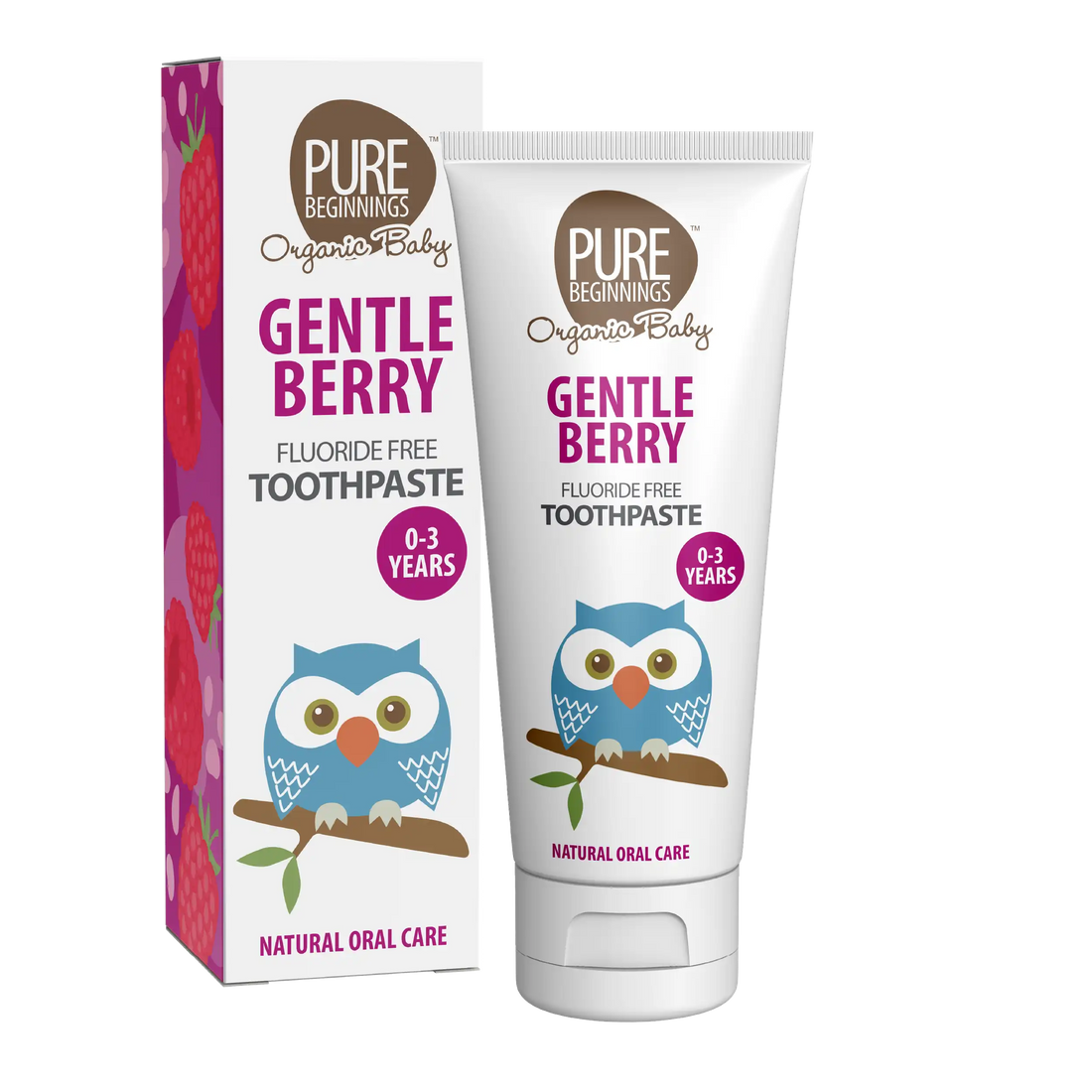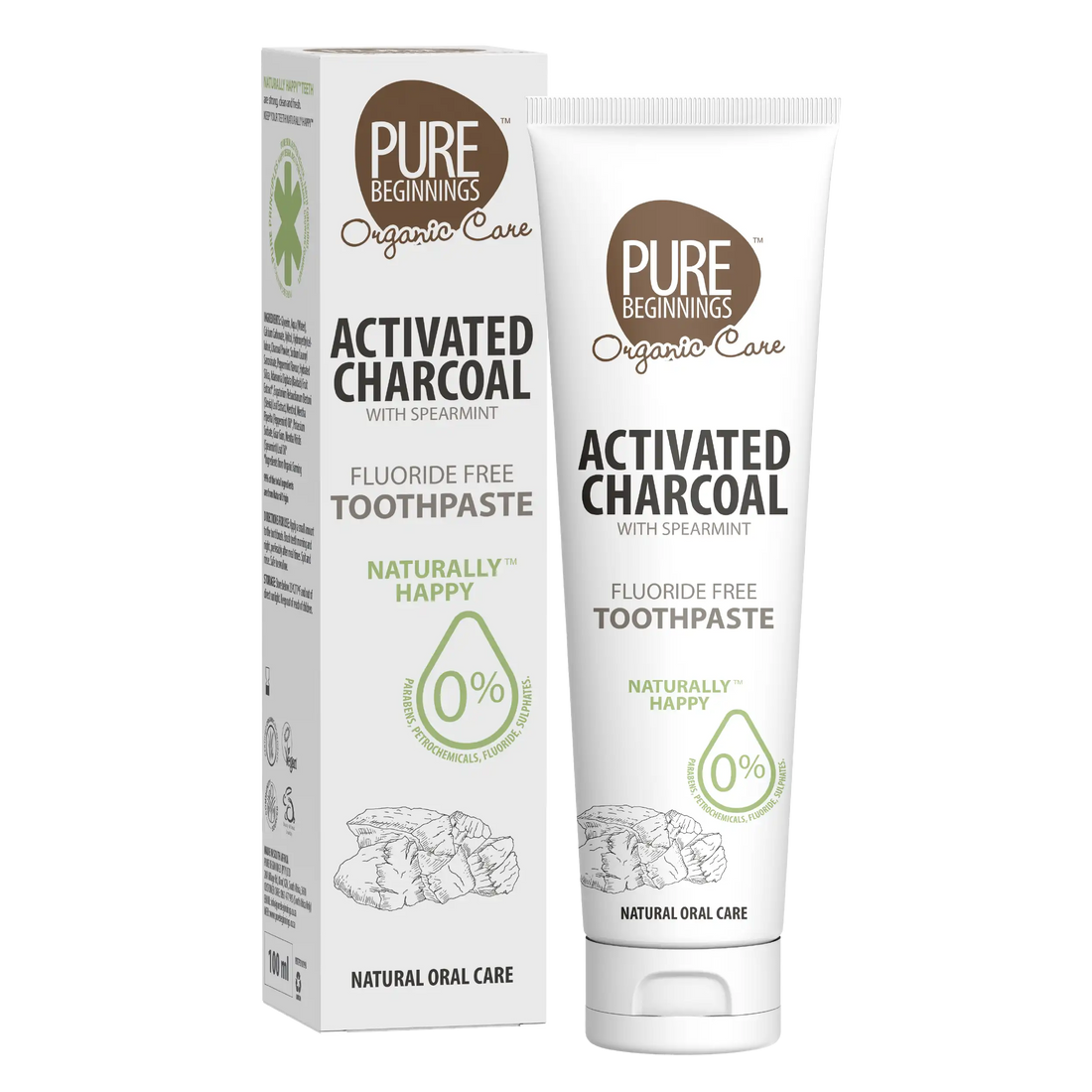

At Pure Beginnings, we believe that true wellness starts long before adulthood — it begins in childhood, with the small daily choices that shape a lifetime of health.
That’s why we were so excited to chat with with Dr. Raveena Manga, an integrative and holistic dentist based in Cape Town, who is passionate about looking at children’s oral health in the context of their whole wellbeing.
Dr. Manga’s approach goes far beyond “just the teeth.” She considers everything from sleep and breathing patterns, to feeding habits, to emotional development — recognising that the mouth is deeply connected to the rest of the body. In this conversation, she shares how prevention, gentle guidance, and an integrative mindset can transform the way we care for our children’s smiles, setting them up for resilience and confidence for years to come.
Holistic & Integrative Approach
Your approach to dentistry looks at the ‘whole child’ - not just their teeth. Can you explain what that means for a parent bringing their little one in for a check-up?
When you bring your child in, I am here first and foremost to listen to your story.
Parenthood is wild and wonderful, and every child’s journey is unique. I want to understand as much as possible — from your birth and feeding journey, to those early sleepless weeks, to any significant events that may have shaped your child’s sense of safety, growth, and wellbeing.
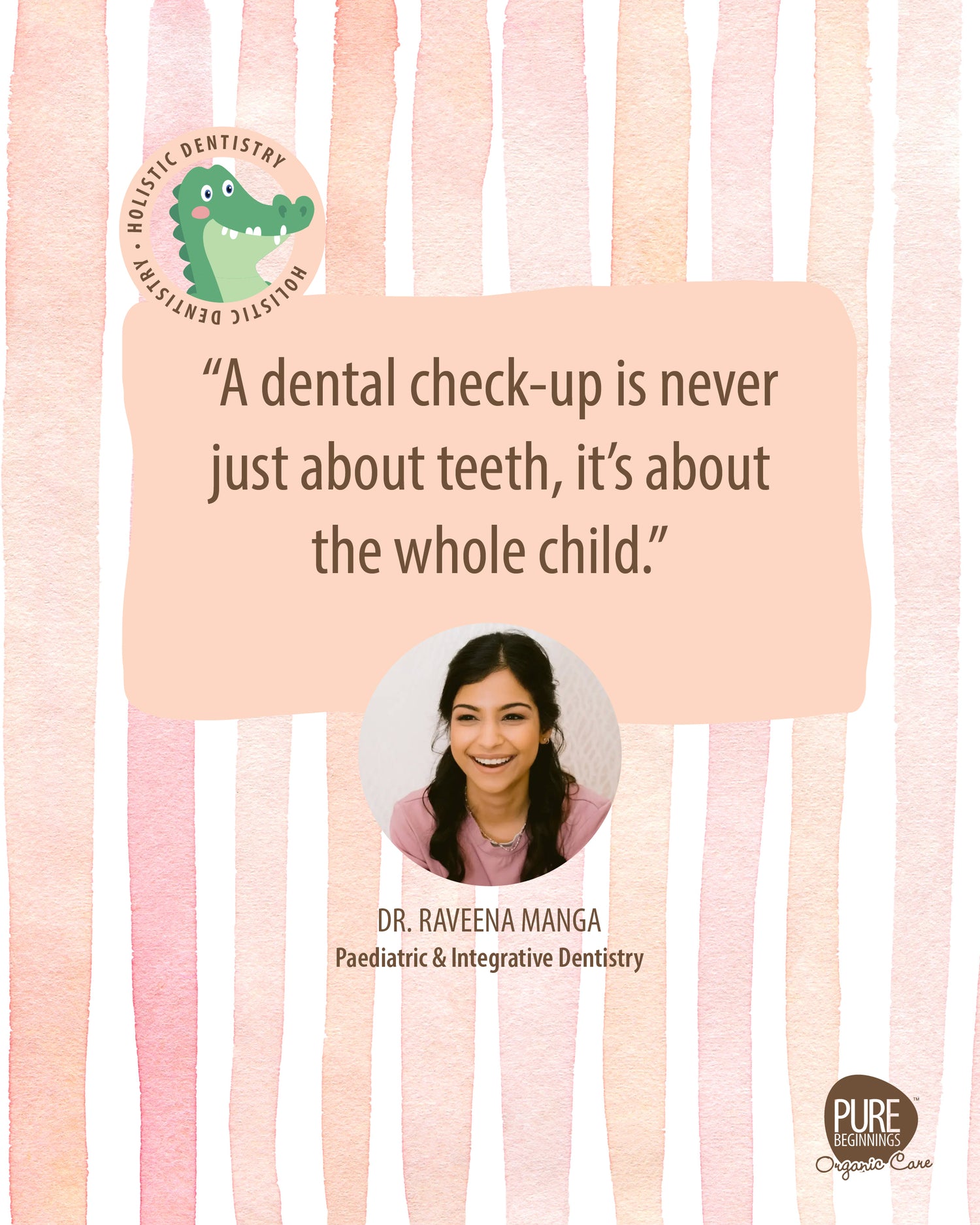
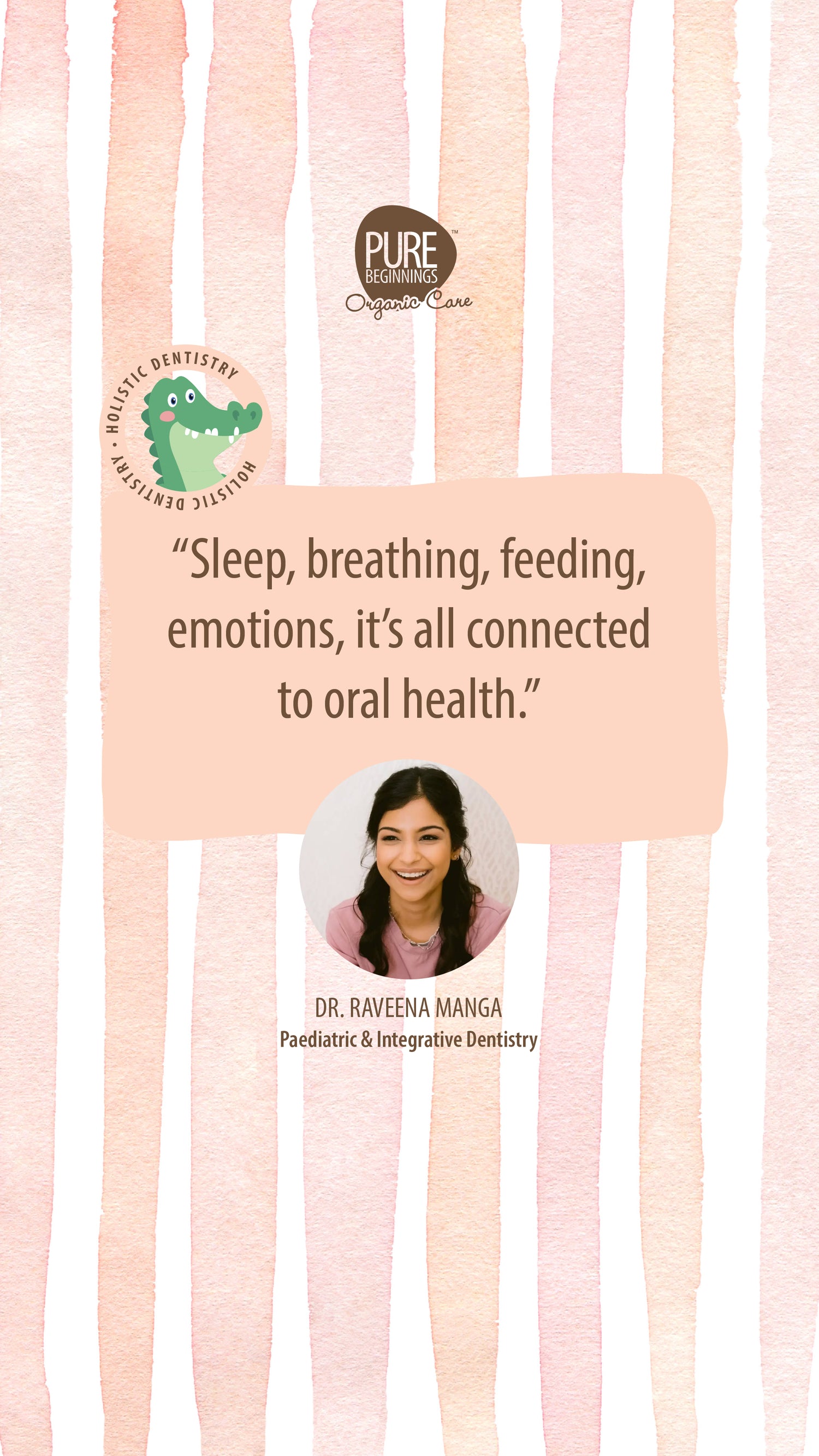
A paediatric consultation with me always goes beyond “just the teeth.”
We’ll talk about your child’s:
• Sleep and breathing patterns
• Feeding and eating habits
• Emotional, social, and behavioural development
• Medical history and therapies (with reports from paediatricians, GPs, homeopaths, chiropractors, occupational therapists, physiotherapists, orthodontists, ENTs and others if needed).
This bigger picture allows us to see how oral health connects with overall health — because the mouth is not separate from the rest of the body. I practice within an interdisciplinary, integrative framework. That means working closely with like-minded colleagues to offer the most comprehensive, root-cause based care.
Importantly, treatment is never “one-size-fits-all.” What works beautifully for one family may be completely inappropriate for another. My role is to present safe, sustainable options that respect your child’s individuality and your family’s values.
By seeing each child as whole, we can optimise their health, nurture positive associations with dental care, and empower families with knowledge and choices that truly support them.
You often blend natural and traditional methods in your treatments. Could you give an example of how that works in real life for a child?
Often in dentistry, there isn’t always room for a purely “natural” approach — sometimes we simply have to take that X-ray or fill the cavity. The reality is that there’s absolutely a time and place for intervention. For example, when a cavity extends into the second layer of the tooth (the dentine), the only way forward is to arrest or restore it. But if the cavity is still limited to the first layer (the enamel), we can often use remineralisation protocols to prevent more invasive treatment later on.
Another example is in orthodontics. Parents often ask me to assess their 4- or 5-year-old to predict whether braces will be needed. At that young age, there are many practical things we can optimise to improve the chance of avoiding orthodontic treatment later on.
But by 9 years old, with similar clinical signs, the situation is different: growth is slower, bones are less malleable, and we often need a blend of conventional and integrative treatments.
This is why I place so much emphasis on prevention.
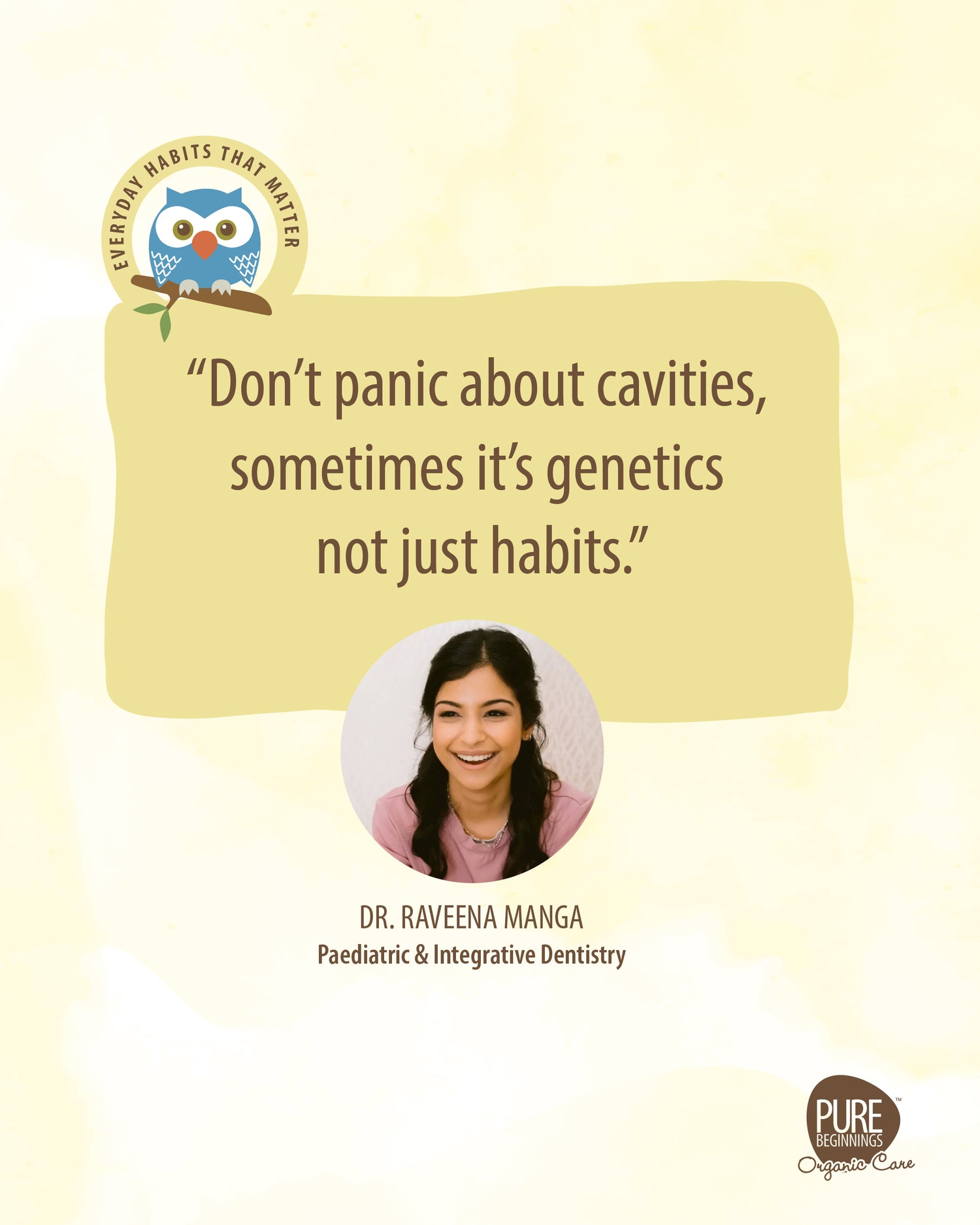
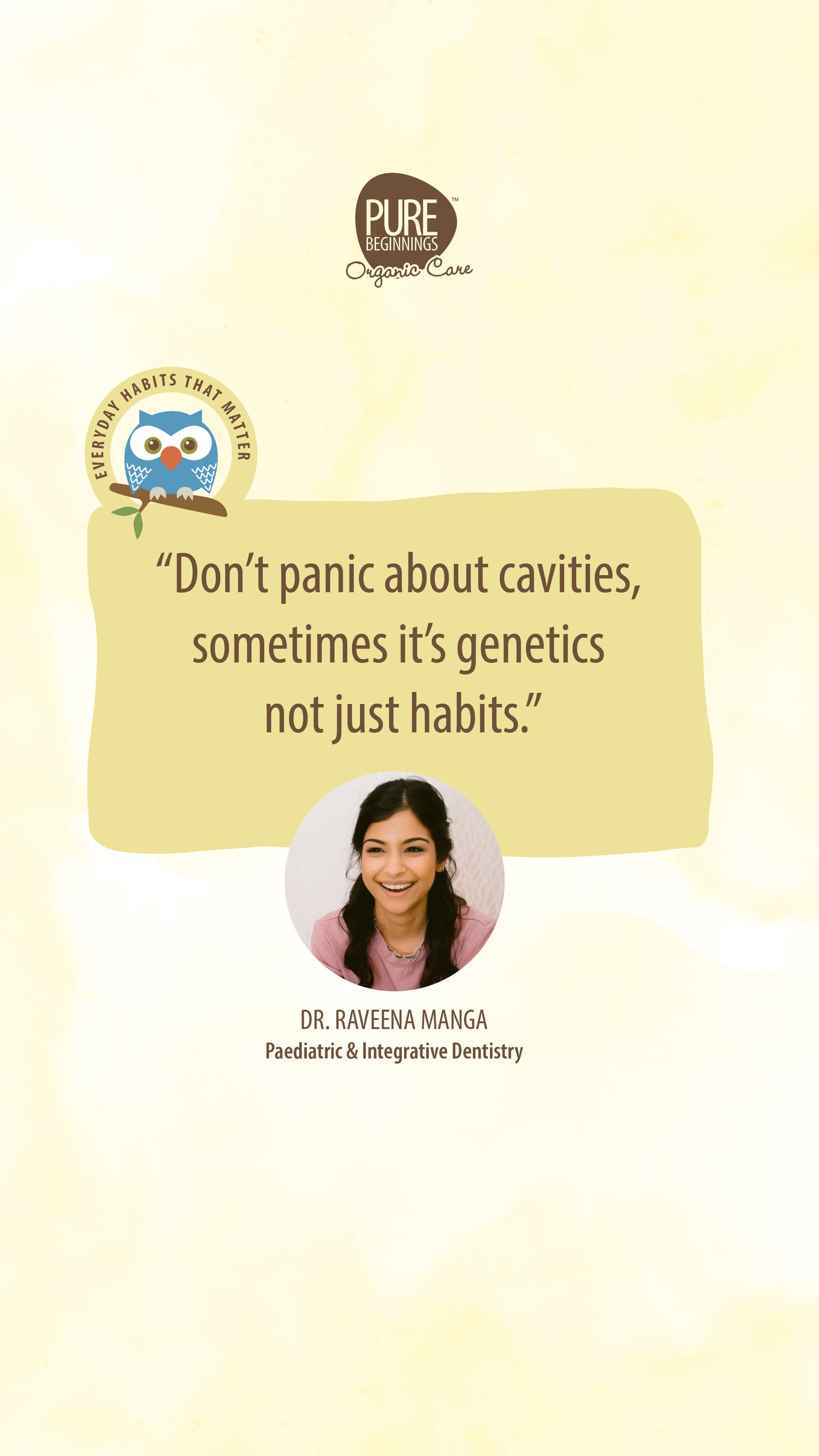
Questions we should ask ourselves
The real question is:
• How can we support oral and airway health from the very beginning of life?
• What products and dietary choices are best for your child?
• How is your child breathing — and how should they be breathing?
• When is the right time to introduce flossing?
• When is it best to say goodbye to the dummy?
The first six years of life are critical. Educating parents during this time can truly change the trajectory of a child’s growth and development. For example, a child with a dysfunctional breathing pattern who is also eating nutrient-depleted food is at far greater risk of underdeveloped jaws and future dental disease. By optimising breathing, daily oral care, and nutrition early on, we can reduce the need for intervention later. I wouldn’t call this strictly a “natural” approach — it’s more of a sensible & rational one :)
Preventing Early Tooth Problems
We hear a lot about tooth decay in young children being a growing problem in South Africa. Why do you think this is still happening, and what can parents do at home to help prevent it?
Dental caries (dental decay) is the most prevalent childhood disease globally. If you pause to put that into perspective — it’s staggering.
If you look at the skull of a primitive human, you’ll notice something remarkable: wide jaws, straight teeth, broad airways — and no dental decay. These people had zero access to professional dental care and no daily oral hygiene routines. So, what changed?
The decline in dental health began after the agricultural and industrial revolutions, when diets shifted dramatically. With the rise of ultra-processed, convenience foods, our jaws have also become smaller and narrower, leaving less space for teeth to develop in proper alignment. Sadly, our modern food is no longer as nutrient-dense as it once was.
As millennial parents — many of us busy and working — we’re constantly seeking quick, easy meals and snacks for our children, often without realising what’s actually going into their little bodies. This is one of the root causes of the global dental epidemic.
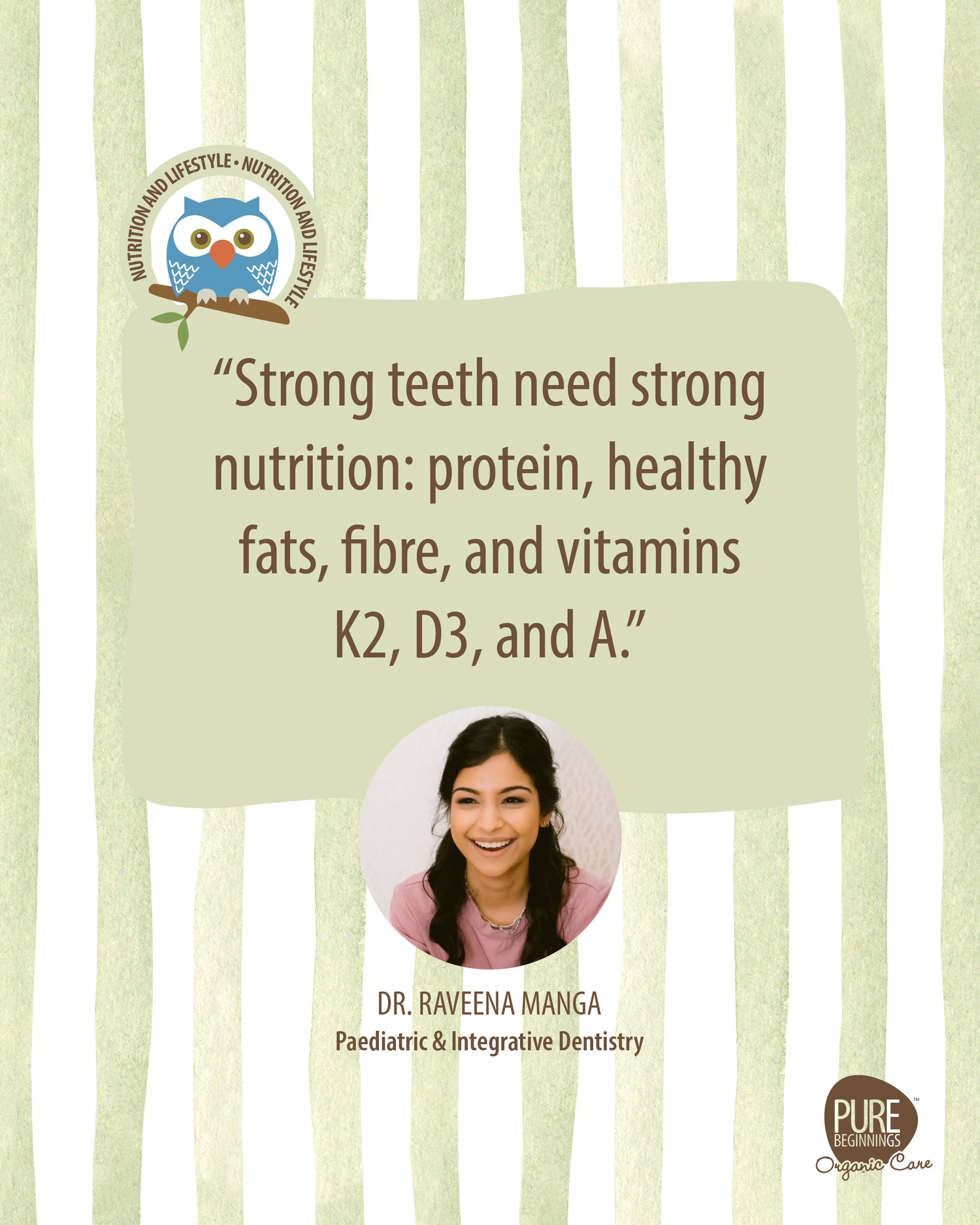

To build resilient teeth and strong oral health, children need a nutrient-dense, varied diet that includes:
• Adequate protein
• Healthy mono- and polyunsaturated fats
• Pre- and probiotics
• Fibre
• Vitamins K2, D3, and A — which are crucial for building strong teeth and maintaining their innate immunity.
Breathing patterns also play a major role. In practice, we’re seeing more and more children who mouth breathe. The mouth is designed for speaking and eating — not for breathing. Our noses and sinuses are perfectly built to filter, humidify, and regulate airflow, allowing for optimal oxygen absorption in the lungs, for nitric oxide secretion, and healthy midface and jaw development.
When a child mouth breathes, the mouth dries out, and the teeth lose the protective benefits of saliva (which carries essential minerals and buffering agents). This makes the oral environment becomes acidic — a perfect recipe for decay.
Finally, education from an early age is key. Parents often don’t realise that brushing alone is not enough. Flossing should begin as soon as teeth start to touch — sometimes as young as 18 months. Many of the cavities we see in young children are “hidden” between teeth and can’t be spotted with the naked eye, mostly due to a lack of flossing.
Learning what the early warning signs are of dysfunctional breathing, and asking your dental provider to teach you how to properly take care of your little one’s teeth from a young age, can really help you avoid more serious dental disease later in life.
AMAZINGLY FRESH - NATURALLY EFFECTIVE
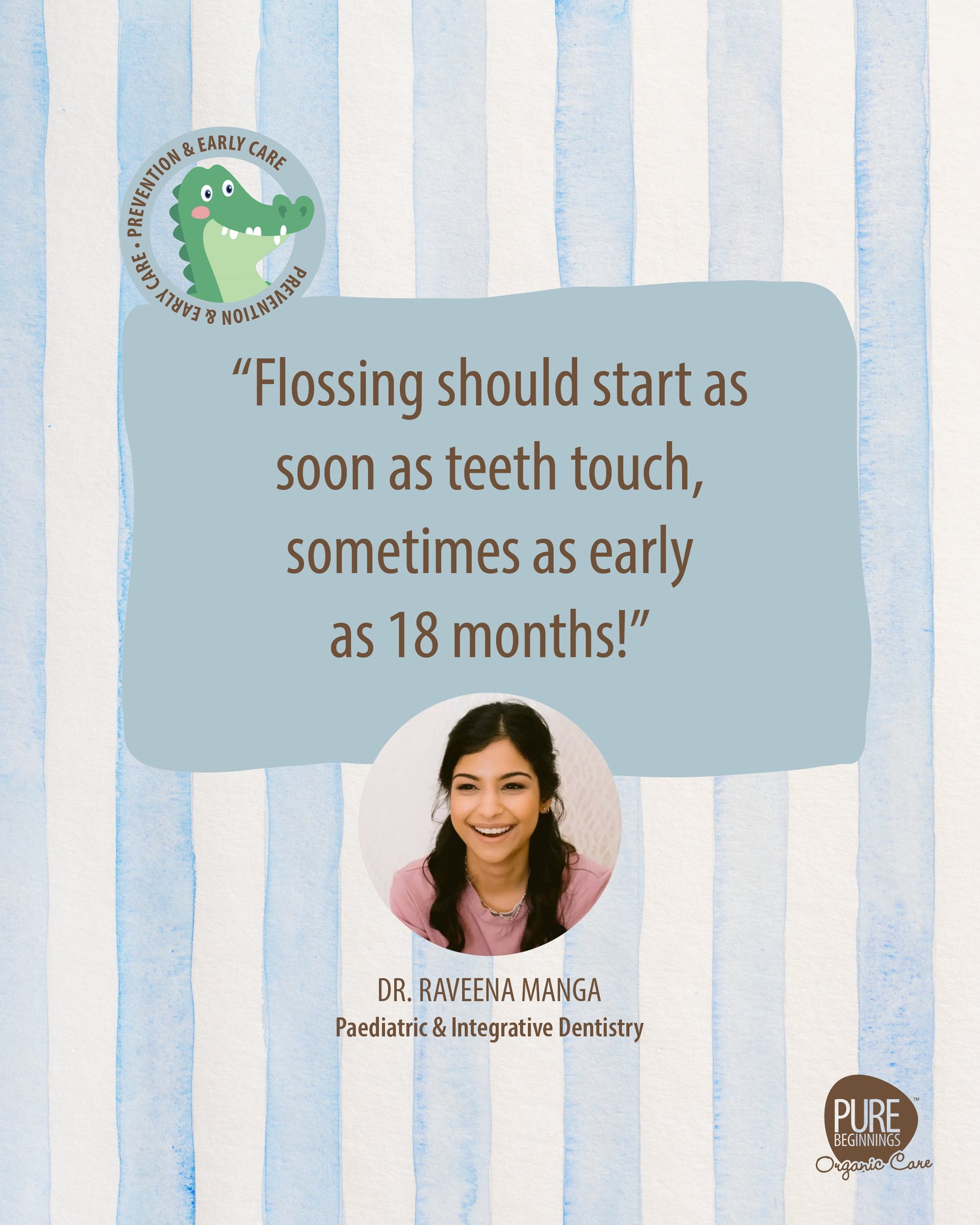

Baby Teeth
Some parents believe baby teeth aren’t that important because “they’ll fall out anyway.” How do you help families understand why these early teeth really matter?
Milk teeth are a vital part of a child’s development. They guide the growth of the jaws and face, help children chew textured foods (which is so important in the first few years of life), act as placeholders for the permanent teeth, and play a key role in speech development.
When a baby tooth has to be removed prematurely, there can be a ripple effect of long-term consequences. Surrounding teeth may drift into the empty space, reducing room for the permanent teeth to erupt. Chewing and speech can also be affected.
While I sometimes refer to baby teeth as “practice teeth,” they absolutely serve an essential purpose. They deserve the same respect and care as permanent teeth, and prevention and early intervention should always be a priority.
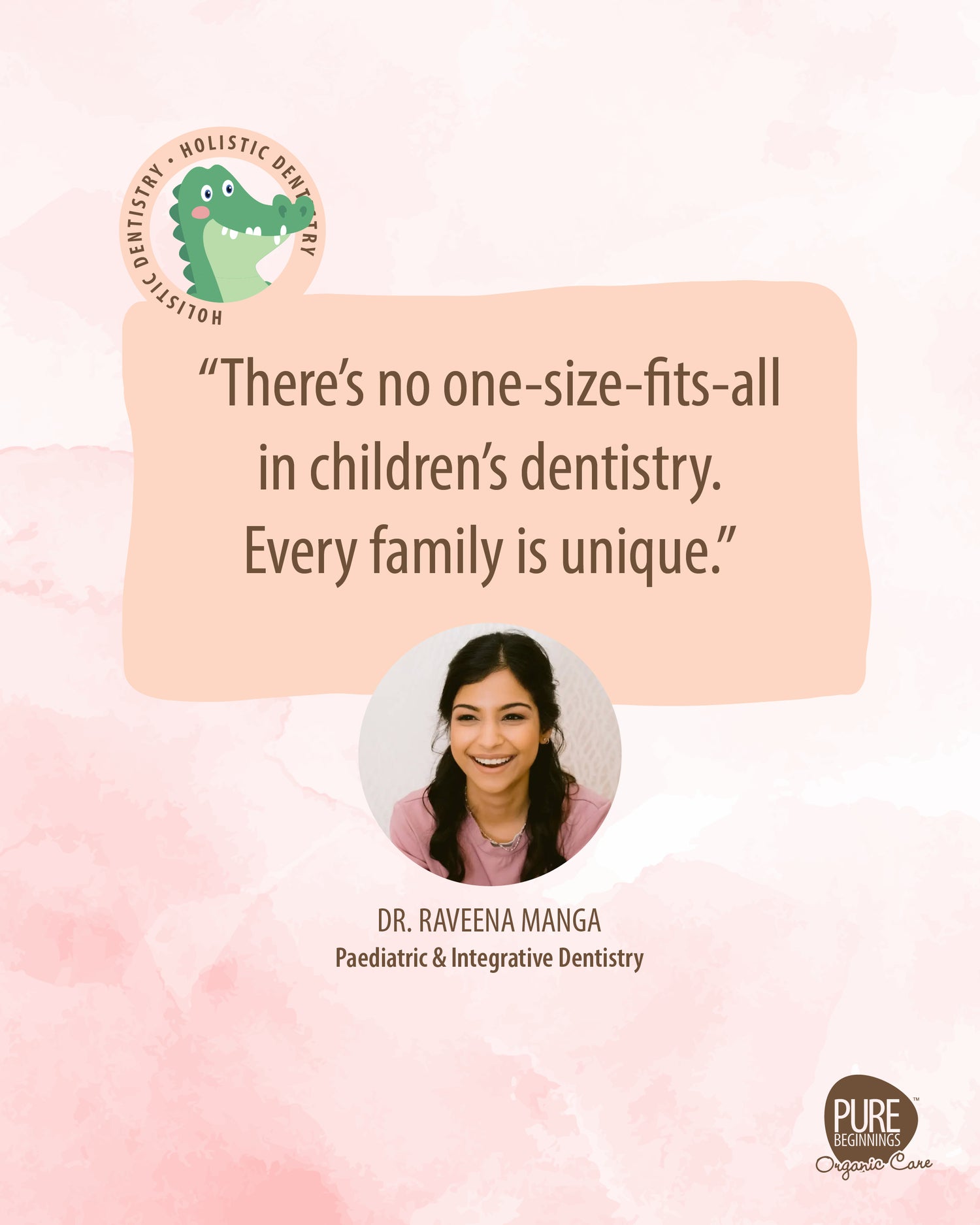
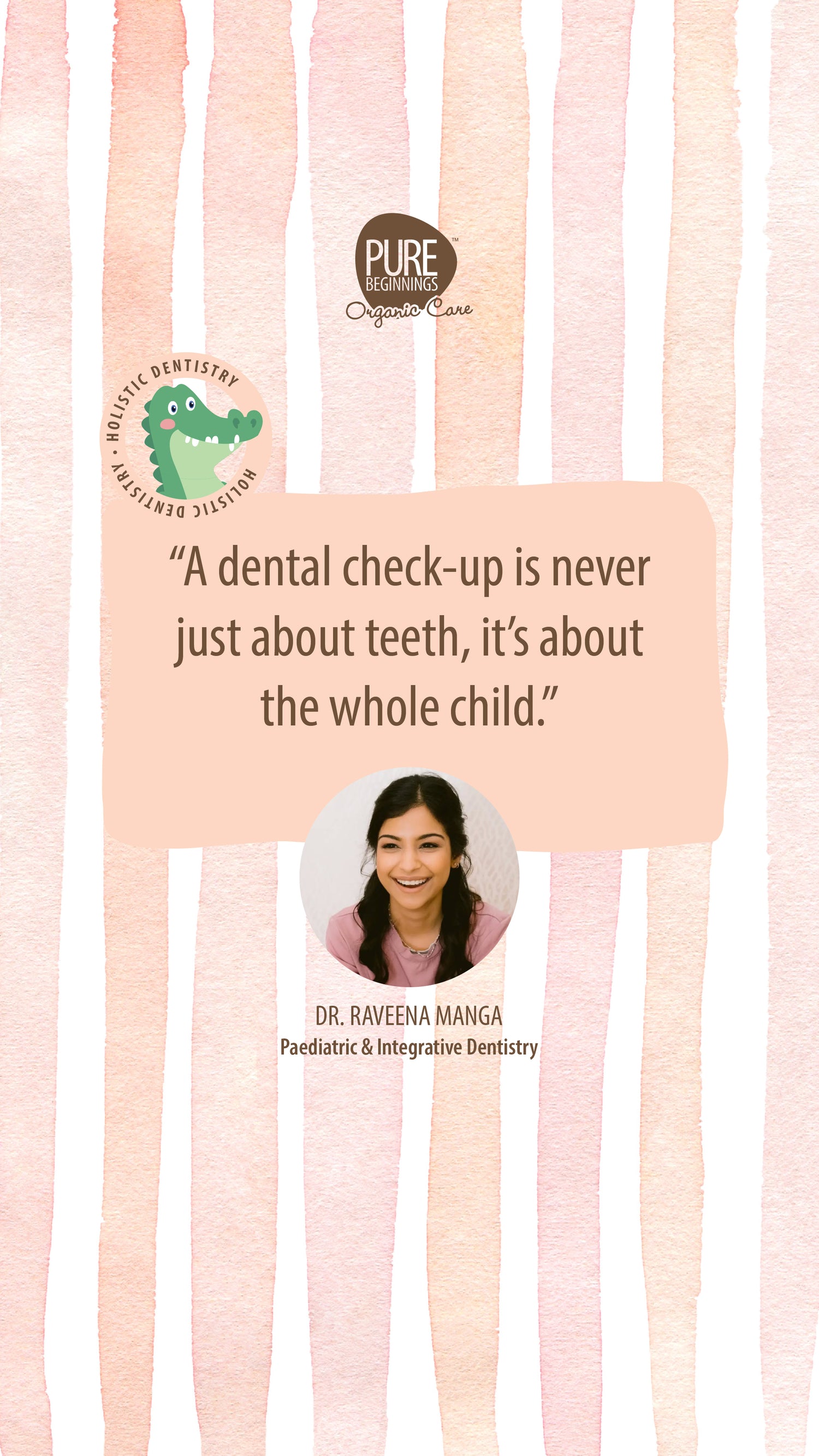
Supporting Parents
Parents often feel guilty if their child gets a cavity. What’s your advice to help them feel more confident and in control of their child’s dental health?
Maintaining a regular and consistent dental hygiene routine — brushing, flossing, and eventually tongue scraping — is one of the most powerful things you can do for your child.
Pair this with encouraging nasal breathing and offering a nutrient-dense diet most of the time, keeping your child well hydrated, and you’re already laying a strong foundation.
We recommend starting your child’s dental journey as early as 24–36 months (or sooner if you notice any concerns). Find a practitioner your child feels comfortable with, and whose approach aligns with your family’s values. Early visits help desensitise your child to the dental environment so that they learn it’s a safe and friendly place.
Regular dental check-ups also mean that any issues can be picked up early. Baby teeth are different from adult teeth in that children often don’t feel pain until a cavity has reached the nerves and blood vessels in the tooth — at which point treatment may require an extraction or a mini root canal. But if cavities are identified in their early stages, sometimes we can even attempt to remineralise or reverse them with the right protocols.
We know there’s a lot of noise out there — from social media, parent groups, and marketing campaigns — about which products, foods, and routines are “best.” It can feel overwhelming. My advice is to lean on trusted clinicians and evidence-based resources, while also trusting your parenting instincts.
When your child does develop a cavity, it may feel really hard and you may find yourself spiralling in guilt. I remind parents that sometimes, despite doing everything “right,” children may still develop cavities. Epigenetic factors play a role — weakened enamel or narrow jaws can be inherited from generations before us.
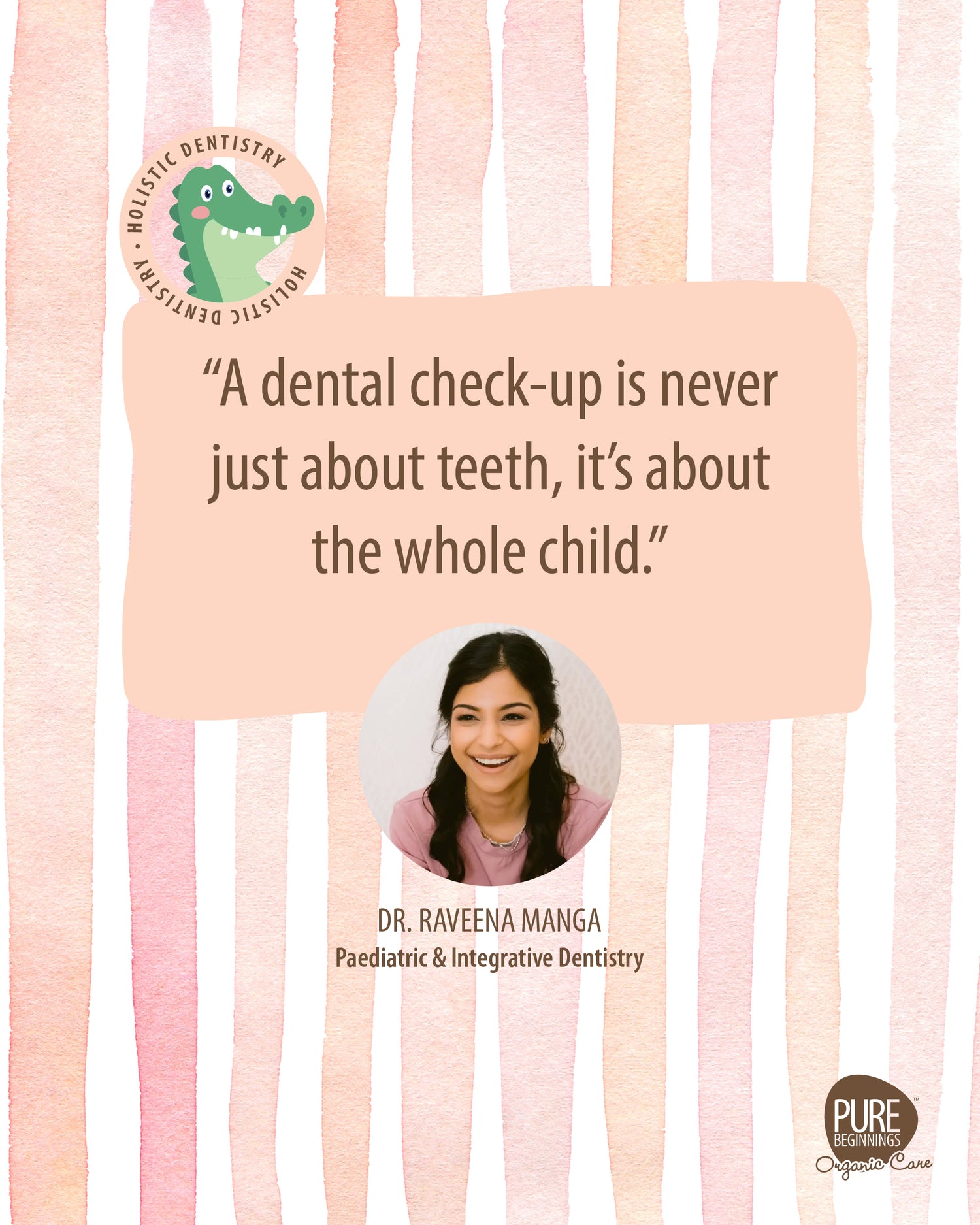
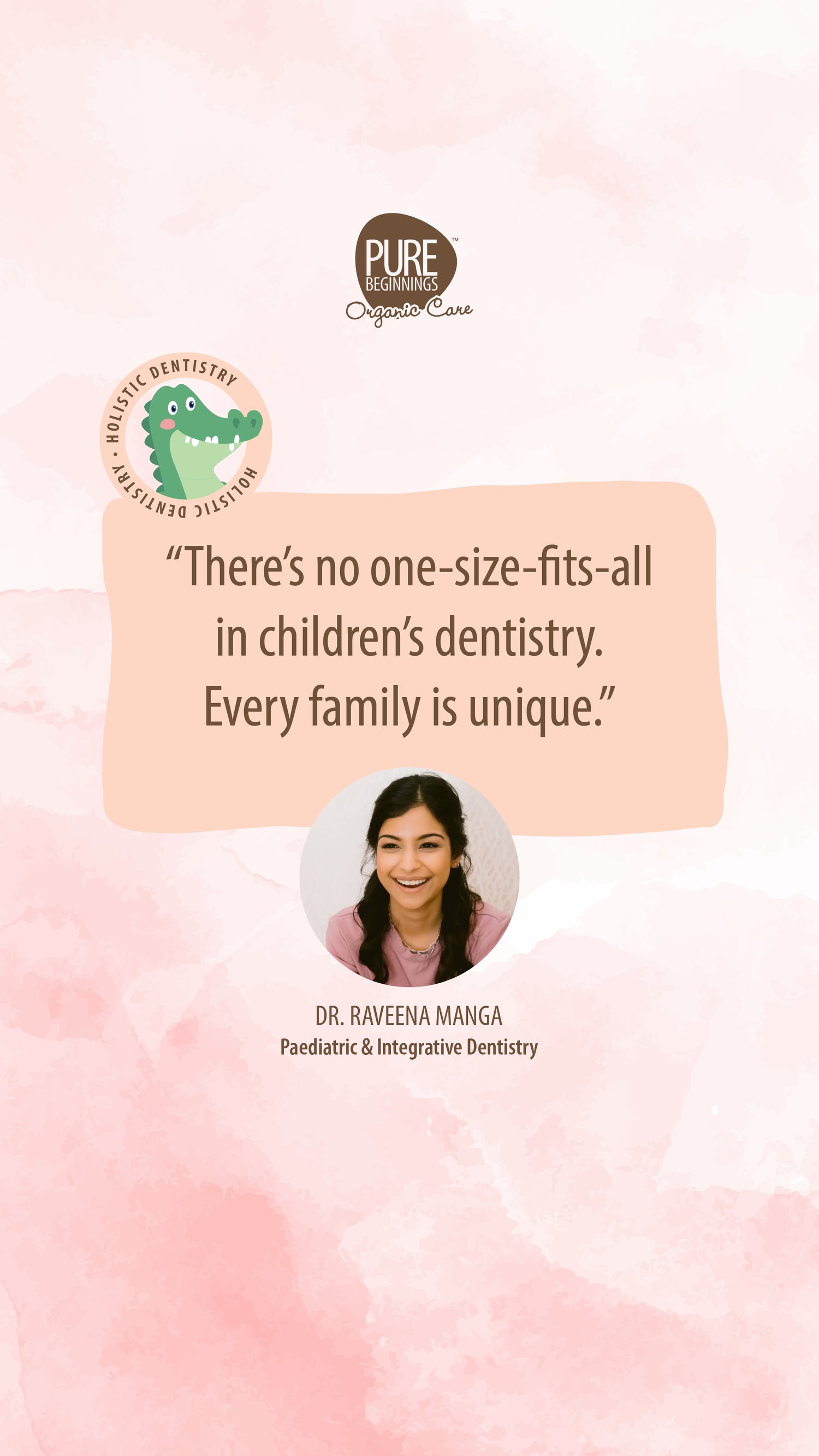
Everyday Habits
Are there any simple, everyday habits you recommend that make the biggest difference?
Flossing, flossing, flossing! It’s one of the most underrated habits, but it truly packs a punch. Without flossing, nearly 30% of the total surface area of the teeth remain uncleaned, which is where many childhood cavities hide.
Choosing dental products that nurture the oral microbiome is another easy win. Look out for ingredients like hydroxyapatite (to strengthen and remineralise teeth) and xylitol (to starve cavity-causing bacteria while keeping the good bugs happy).
If your child is a mouth breather, seek help asap.
Ensure that they are getting enough good quality sleep. Reach out to a supportive and responsive sleep specialist if they aren’t.
And finally, nutrition is key. Meals and snacks rich in protein, healthy fats, and fibre not only support your child’s overall growth but also help teeth develop their own natural resilience and immunity. Encourage frequent sips of water throughout the day.
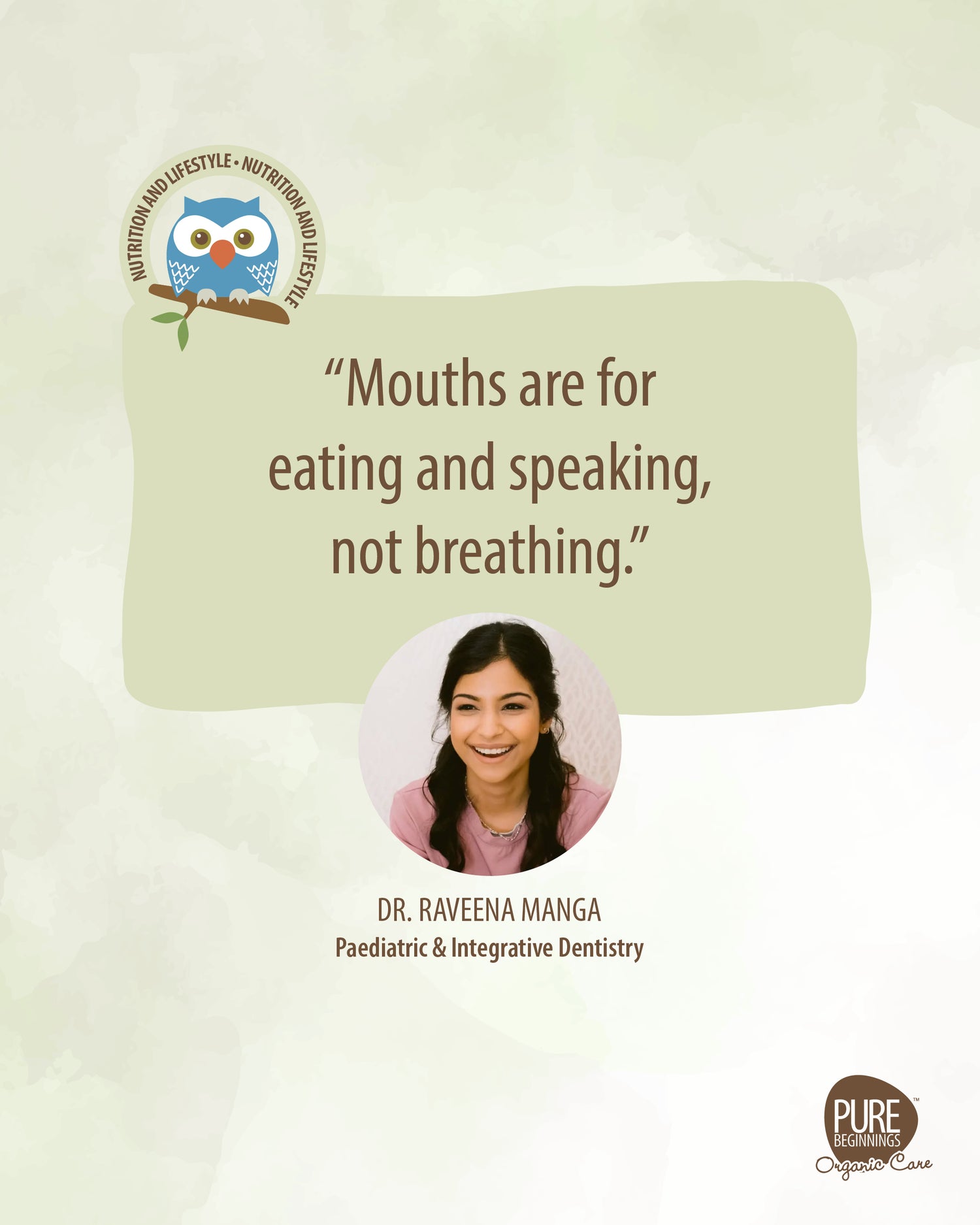
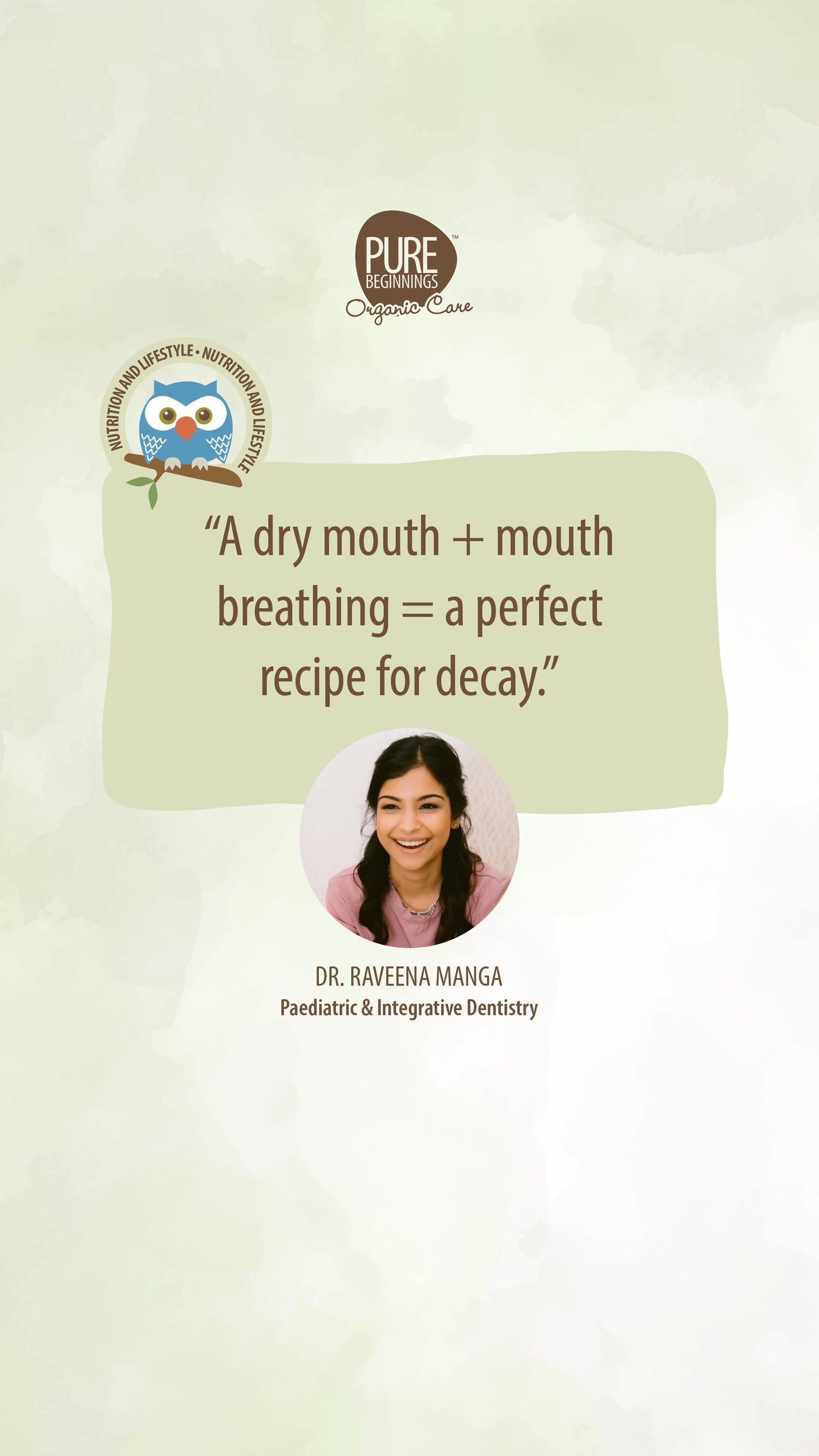
Fluoride and Oral Health
What is your opinion on the use of fluoride?
I’m pro-choice. I think it’s crucial to do your research and make an informed decision. The fluoride debate is highly controversial and polarising. Most conventional dentists advocate for its use—either topically, systemically or both—because of its ability to strengthen enamel that has already been weakened. Fluoride was first introduced in the USA in the 1940s through water supplementation, and later incorporated into toothpastes in the 1950s. At the time, dentists and scientists were amazed at fluoride’s ability to remineralise compromised enamel.
What was overlooked, however, were the associated systemic effects on the human body of fluoride with long-term ingestion of fluoride. While research on long-term and excessive exposure is still evolving, certain risks are well established. These include dental and skeletal fluorosis (weakened or mottled enamel and bones), as well as possible associations with neurodegenerative disease, thyroid dysfunction, kidney issues, and reduced IQ. Importantly, fluoride bioaccumulates in calcified tissues such as bones and teeth, as our bodies cannot fully excrete it.
Because of this, I take a cautious, balanced approach. If fluoride is to be used as a part of the dental routine, I believe it should be only applied topically—for example, in the form of toothpaste that is spat out properly. I strongly advise against systemic intake, such as swallowing toothpaste or using fluoride supplements. I am especially mindful when it comes to young children, as their swallowing and spitting reflexes are still developing, which increases their systemic exposure to fluoride.
It’s also worth asking: is fluoride deficiency really the root cause of dental decay?
Evidence shows that decay rates in populations who use fluoride are not significantly different from those who don’t. This suggests that the underlying causes lie elsewhere—most notably in modern, ultra-processed diets, mouth breathing habits, and subsequently underdeveloped and narrowed jaws.
When considering using a fluoride toothpaste, we must weigh its risks against its benefits and avoid treating it as a “quick fix.” Too often, fluoride is used as a band-aid solution, masking the deeper issues of poor nutrition and lifestyle habits.
In both my practice and my home, I prioritise the fundamentals first: nutrition, breathing, microbiome balance, and oral hygiene habits (such as brushing technique, frequency, tongue scraping, and flossing). Once these foundations are in place, we can then explore which products may enhance oral and systemic health.
To me, prescribing fluoride toothpaste to every patient as a one-size-fits-all solution is outdated. Oral health deserves a more personalised, whole-body approach—one that empowers individuals and families to make informed choices that align with their needs and values. There’s a lot of mixed information out there about fluoride - some parents swear by it, others are cautious. How do you guide families through making an informed choice?
Research, research, research. Choosing to use any product should be done so intentionally and mindfully.
I think the first step is to understand what fluoride actually is, and why it was added to toothpaste and drinking water in the first place. The second step is to learn about what the true root causes are of dental decay. The third is to analyse what our own individual risk of developing decay is, and what the pros and cons of incorporating fluoride into our routine are. And finally, does using fluoride toothpaste align with our values and what we want / need for ourselves and our kids? What are the alternatives? Are there any alternatives?
I believe that if we know differently, we have the opportunity to do differently for ourselves and our kids.
For families who prefer a fluoride-free approach, what other ways do you
recommend to help strengthen and protect teeth which we may not know about? Relying solely on fluoride toothpaste to prevent dental decay is not a true root-cause approach. To build resilient, healthy teeth, we need to start by looking at the foundation— our diets. Nutrient-dense, wholesome foods rich in protein, fat-soluble vitamins (K2, D3, and A), calcium, and magnesium are essential. These micronutrients strengthen each tooth’s innate immune system, which resides in the pulp chamber along with its blood supply and lymphatic drainage.
For toddlers and young children, consistently achieving this balance can be challenging, as they are often selective eaters. Fortunately, there are excellent supplements available on the South African market that provide sufficient K2 and D3, supporting the nutritional needs that contribute to strong, decay-resistant teeth.
When it comes to oral care products, two ingredients stand out as particularly valuable alternatives or adjuncts to fluoride:
• Hydroxyapatite – This is the very crystalline structure that enamel is made of. It offers superior remineralising, desensitising, and strengthening effects. Because it is biomimetic, biocompatible, and non-toxic, hydroxyapatite is especially ideal for young children who are not yet able to spit out toothpaste effectively.
• Xylitol – A natural sugar alcohol that specifically targets cavity-causing bacteria. By helping to balance the oral microbiome, xylitol indirectly promotes enamel remineralisation and supports a healthier oral environment.
Beyond diet and toothpaste choices, overall wellness habits are equally important. Ensuring children sleep well, breathe well, and stay hydrated is critical. Saliva is a powerful natural elixir, containing both buffering and remineralising components that are designed to protect teeth. However, if a child is habitually mouth breathing or dehydrated, saliva cannot function optimally. This can lead to dryness and desiccation of enamel, leaving teeth more vulnerable to decay.
In short, prevention must extend beyond fluoride. By focusing on nutrition, oral environment, and daily habits, we can support children’s teeth from the inside out—giving them the best foundation for lifelong oral health.

